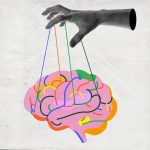Here are some potential trends:
- Digital literacy : In today’s world, being literate means more than just being able to read and write. Digital literacy, which encompasses skills such as using technology, navigating online information, and understanding digital media, is becoming increasingly important. In 2023, we can expect digital literacy to continue to play a significant role in language acquisition.
- Multilingualism: With globalization and increased mobility, multilingualism is becoming more common. In 2023, it is likely that more people will be learning multiple languages, either for personal or professional reasons. This could have implications for language acquisition, as learners may need to develop new strategies for managing and processing multiple languages.
- Personalized learning: Advances in technology are enabling more personalized learning experiences, which can be tailored to individual learners’ needs and interests. In 2023, we can expect to see more language learning resources that use artificial intelligence and machine learning to adapt to learners’ abilities and preferences.
- Blended learning: Blended learning, which combines online and in-person instruction, is becoming increasingly popular in language education. In 2023, we can expect to see more language learning programs that incorporate both online and offline components, allowing learners to benefit from the flexibility of online learning while also engaging in face-to-face interaction with teachers and peers.
- Social media: Social media platforms are already used extensively for communication and information-sharing, and they are likely to continue to play a significant role in language acquisition. In 2023, we can expect to see more social media-based language learning resources and communities, which can provide learners with opportunities to practice their language skills with native speakers and other learners from around the world.
As language learning becomes more personalized, immersive, and collaborative, learners will have more opportunities to develop their language skills and prepare for a globalized and interconnected world.
However, the fundamental skills of reading, writing, and communication will continue to be essential, and educators and learners will need to find new and innovative ways to develop and enhance these skills in the years to come.

Some of the more recent literacy trends are modified through the following technological advancements such as:
- Gamification: Gamification, or the use of game-based elements in language learning, is becoming more popular as a way to engage learners and make language learning more enjoyable. In 2023, we can expect to see more language learning apps and resources that incorporate gamification elements such as badges, rewards, and progress tracking.
- Artificial intelligence: Advances in artificial intelligence are already being used in language learning, with tools such as chatbots and virtual tutors. In 2023, we can expect to see more sophisticated AI-based language learning tools that can provide more personalized and adaptive learning experiences.
- Augmented reality and virtual reality: Augmented reality and virtual reality technologies have the potential to revolutionize language learning by providing immersive and interactive experiences. In 2023, we can expect to see more language learning resources that incorporate these technologies, such as virtual language exchange programs that allow learners to practice their language skills in a realistic environment.
- Collaborative learning: Collaborative learning, or learning in groups, is becoming more popular in language education as a way to promote social interaction and communication. In 2023, we can expect to see more language learning programs that incorporate collaborative learning approaches, such as peer-to-peer language exchange programs and online language learning communities.
- Soft skills development: In addition to language proficiency, employers are increasingly looking for soft skills such as communication, collaboration, and cultural awareness. In 2023, we can expect to see more language learning resources that focus on developing these skills, such as intercultural communication training and language immersion programs that provide opportunities for learners to interact with native speakers in real-world settings.
Language acquisition in 2023 is likely to be shaped by a combination of technological advancements, changes in global communication, and evolving educational trends. As language learning becomes more personalized, immersive, and collaborative, learners will have more opportunities to develop their language skills and prepare for a globalized and interconnected world.








